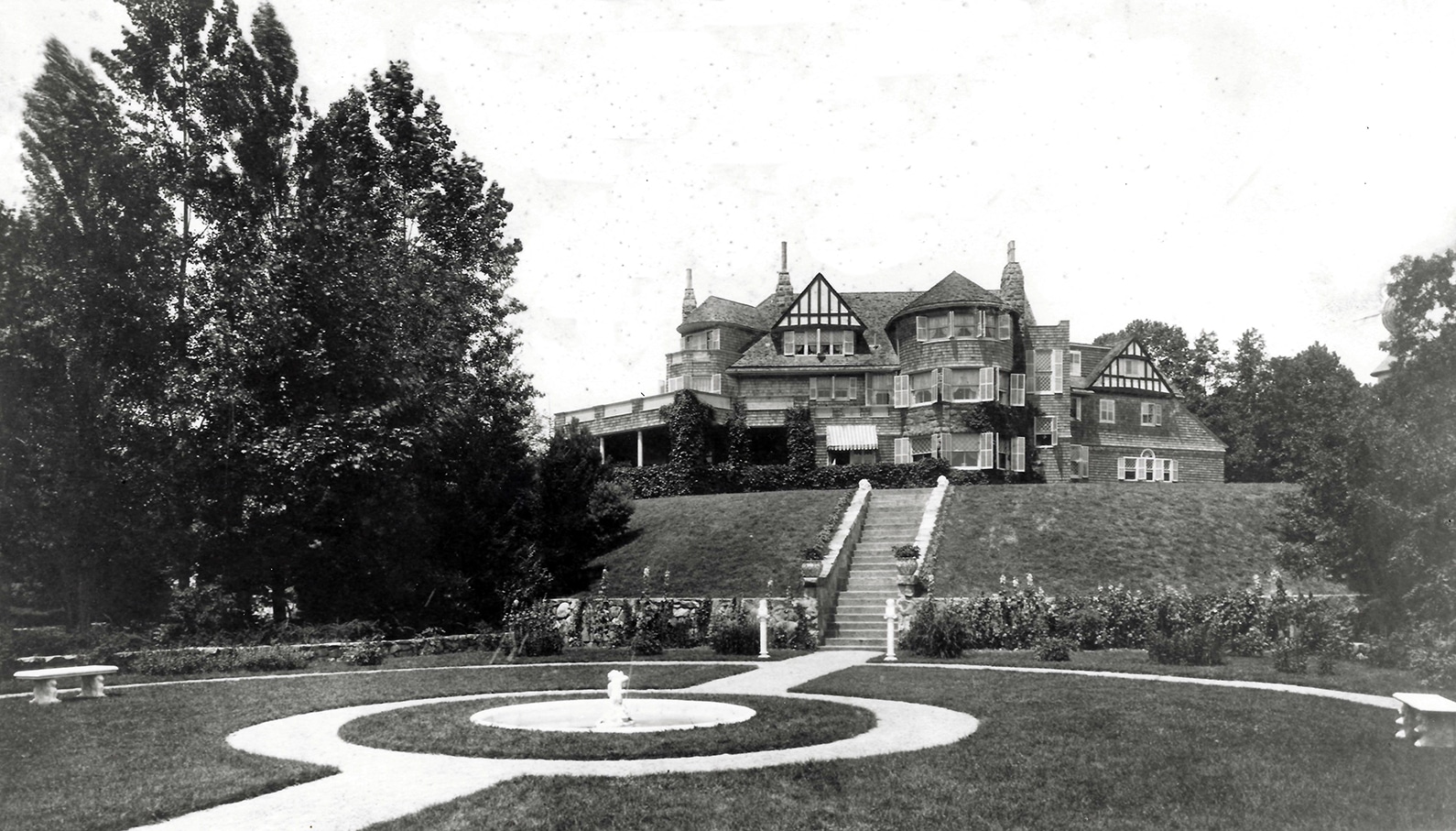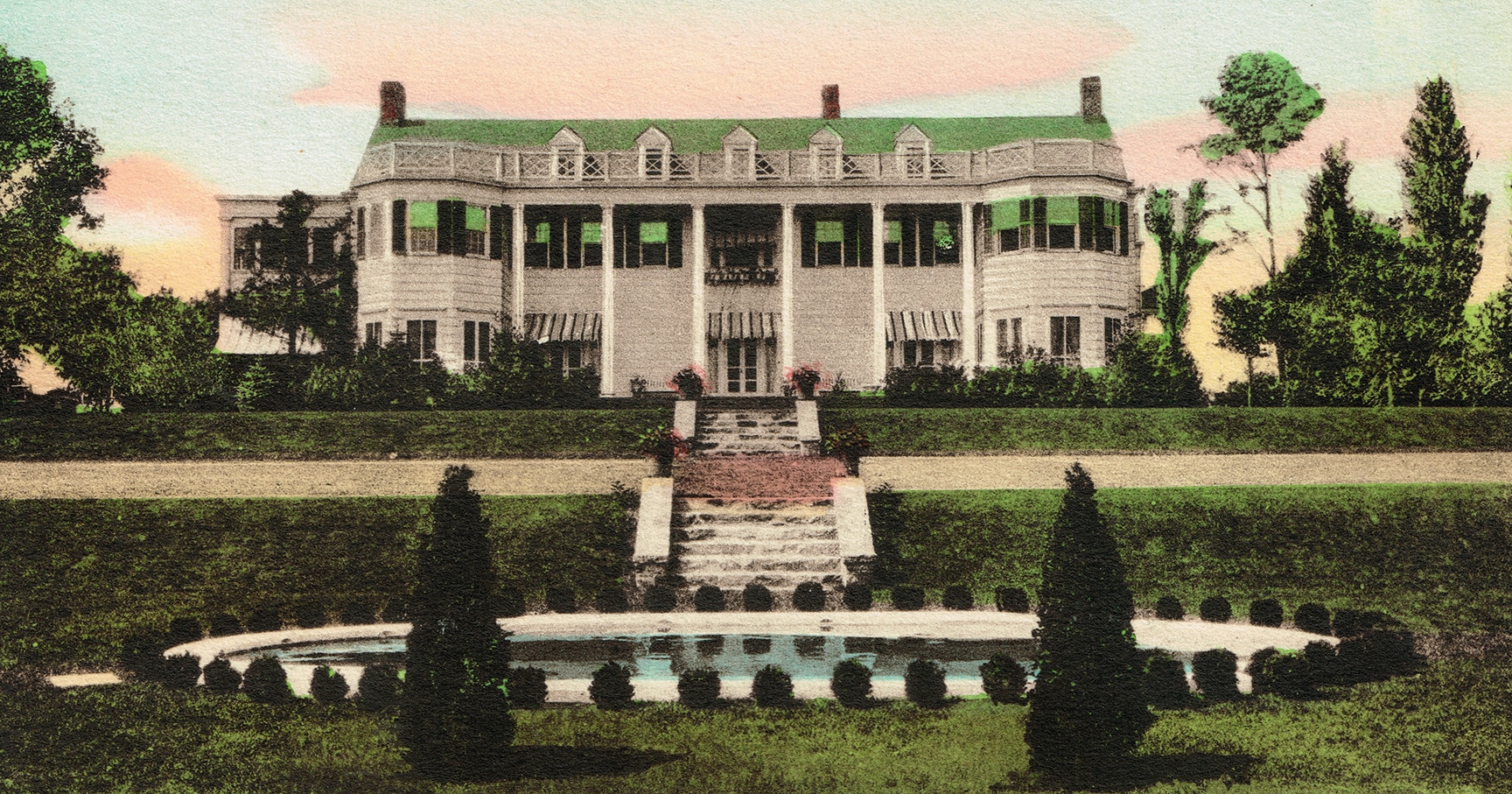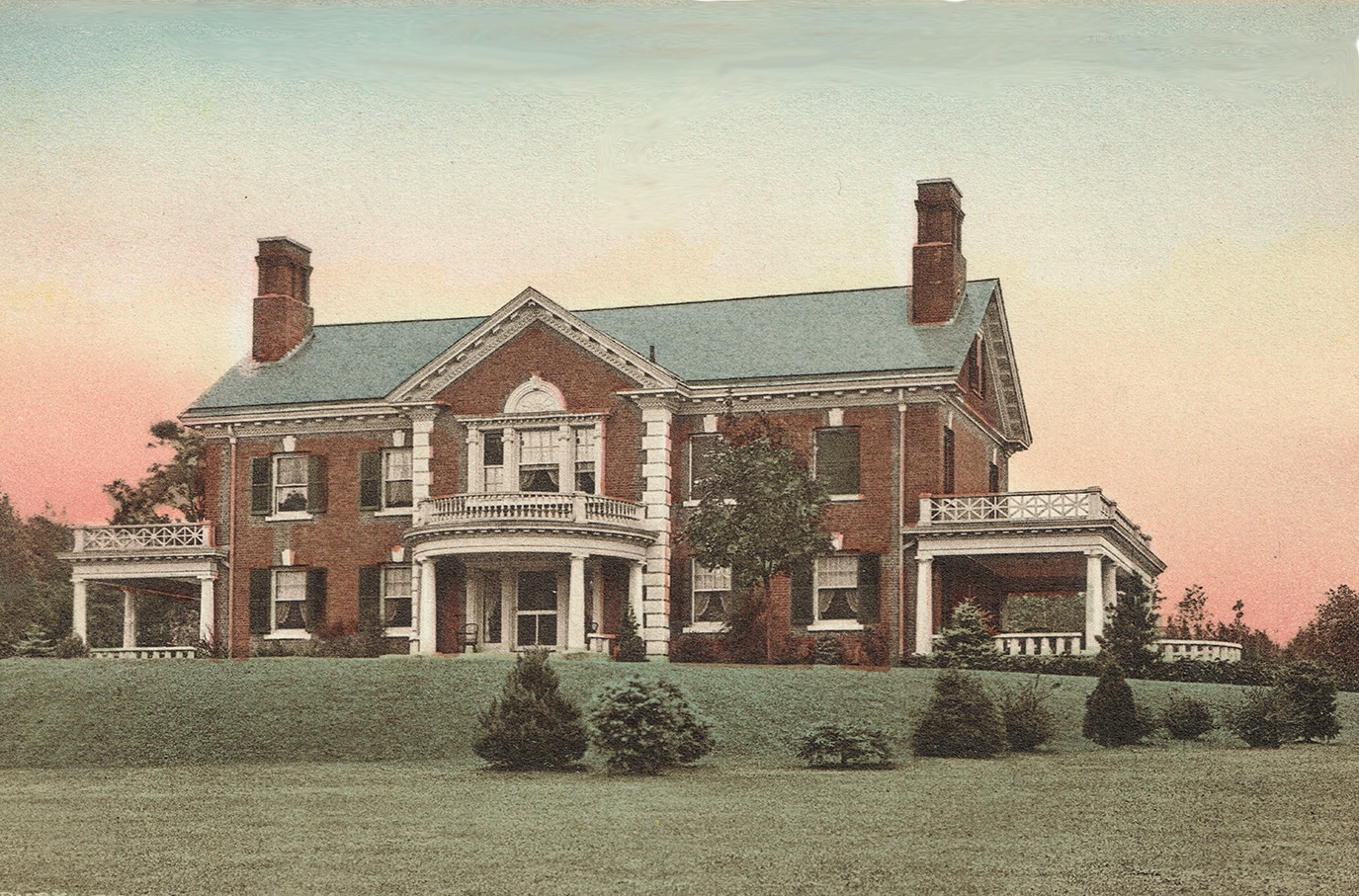A 19th Century locomotive was a noisy, smelly, dirty machine, but it provided an escape from a noisy, smelly, dirty place: New York City. The construction of the railroad in 1870 dramatically changed the Ridgefield village. The comfortable, two-hour trip from Manhattan drew scores of wealthy New Yorkers who built “cottages” to escape the steamy, stinky city summers.
Grand estates began replacing farmland in the 1880s. Ridgefield was being promoted for its offering of fresh air and—at 800 to 900 feet above sea level—views that could astound. From many spots one could see Long Island to the south or beyond the Hudson River to the west.
Good press helped. By 1890 The New York Times ran regular reports of Ridgefield’s social scene and touted the town’s benefits. Under an 1893 headline, DOCTORS RECOMMEND RIDGEFIELD, The Times reported: “The success of Ridgefield as a summer resort” is partly due to “the influence of many of the prominent physicians of New York, who have induced their patients to pass the summer here,” and listed doctors who’d built homes in town. Advertising even boasted that Ridgefield was typhoid-free.
The Place to Be

Among the physicians was Dr. Bache McEvers Emmet, whose 43-acre estate on West Mountain, Greywacke, provided spectacular views to the west. It was later named Innisfree, home of
Dr. Patrick Neligan who modernized Ridgefield’s Health Department.
Farther up the mountain, John Hampton Lynch, who headed the Terminal Warehouse in Manhattan, established his 50-acre “West Mountain Farm,” nearly 900 feet above sea level, with panoramic views. His mansion survives as the core of Ridgefield Academy.
Nearby, heroic Civil War surgeon Dr. John Perry turned a farm into a summer estate. His modest home was replaced with stately Sunset Hall, owned by the family of magician Harry Houdini, and later actor Robert Vaughn, followed by TV interviewer Dick Cavett. From the roof, one could see the Manhattan skyline.
In the village, High Ridge was being promoted as ideal for summer places. E.P. Dutton’s 1890 mansion, still standing, once included a bedroom toilet positioned near a window so the book publisher could enjoy views of the Hudson Valley. Dutton was one of many civic minded “summer people,” and helped purchase the library site as well as land later housing Ridgefield High School for a half century.
High Ridge mansions came and went. Altnacraig, which burned in 1994, was the country home of Alonzo Barton and Emily Hepburn. Barton headed the huge Chase Bank in New York. After he was killed by a Fifth Avenue bus, Emily pursued a new life, building a 26-story Manhattan residence for working women that became the landmark Beekman Tower hotel.
Hotels were the realm of William Hawk, who built and operated The Manhattan, once the world’s tallest hotel. His 40-room “Hawks Nest” off Branchville Road, a turn-of-the-century showplace, burned in 1921.
The threat of fire worried express company executive Frederic Lewis, so his 40-room fortress was fashioned of fireproof masonry. Lewis’s 140-acre Upagenstit estate along West Lane was staffed by nearly 100 people, including his personal physician and private chef (with houses provided for each). His wife, Mary oversaw vast gardens and immense greenhouses, growing prize-winning orchids.
Other Retreats

Not all the great estates were summer-only. Tin magnate Louis Conley decided by 1914 he wanted an “outpost” from the city. Outpost Farm on Bennett’s Farm Road became the center of not only his estate, but his enormous nursery — 2,000 acres in all — that provided trees and shrubs for countless estates (including F.D.R.’s), parks, universities, and two World’s Fairs. After a stint as Fox Hill Inn, his handsome mansion was torn down, but remnants remain visible at Bennett’s Pond State Park.
Nor were all estate owners New Yorkers. Phineas Lounsbury was born on a Ridgefield farm, made his fortune in New York, and chose his native town as his summer and retirement home. After serving as governor, he moved his first Main Street house and built a new one, now the Lounsbury House.
While many estates have been subdivided, one has survived almost untouched. Built in the 1890s on over 100 West Mountain acres straddling the state line, Rippowam was acquired by the Bulkley-Randolph family in 1902 and, virtually unchanged in size, has remained in the family for 120 years!
End of an Era

However, the Depression doomed many estates as too costly and inefficient. Some mansions were demolished; others found new uses. The 27-room Dixon place on Lake Mamanasco, once owned by a mobster, became a resort, then a Jesuit retreat house, and is now the center of the St. Pius X Catholic complex. Before it was demolished in 1953, Downesbury Manor, the 45-room retreat of hat-maker Edward Knox, became a “dude ranch.” The majestic mansion that once entertained the likes of Mark Twain featured ancient fireplace tiles from the Alhambra in Spain.
Some houses shrank. Albert Wiggin, Hepburn’s successor at Chase, built his sprawling Peaceable Street mansion elongated to take advantage of the view. Today, it’s less sprawling and more efficient. Beacon Hill, the Wilton Road West cottage of Dr. Newton Shaffer, founder of the first hospital for the disabled, once had six chimney stacks and wrap-around porches with views of Long Island. Today, one chimney remains, porches are gone, and so is the view. Like many other vistas, trees grew up and cut them off.
Nonetheless, city folk continue to
flock to Ridgefield, encouraged recently by the pandemic. The air is still cool and clean, and although some original views are now blocked by trees, the rich forests and engaging culture add to the charm. •